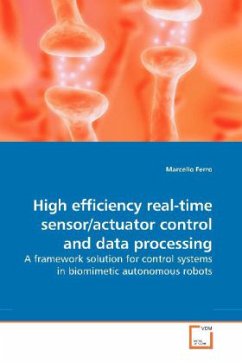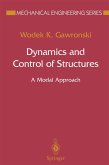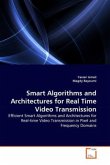The advances in sensor and actuator technology foster the use of large multi-transducer networks in many different fields. The increasing complexity of biologically-inspired architectures requires high efficiency interconnection and co-operation of several control and processing modules. A real-time approach for data analysis requires the realization of interconnected modules which are capable to establish an efficient communication channel. In this way the application should be able to control all modules of the elaboration chain, including analysis protocol management and sensory and actuating interfaces. To help dealing with these problems an architecture for a dynamic and efficient management of multi- transducer data processing techniques is presented. The author proposes an homogeneous software framework able to manage at the same time transducer devices and data processing. The framework is realised as a software library in order to exploit the potentials of the computational algorithms and to enhance the performances of neurally-inspired processing techniques.
Bitte wählen Sie Ihr Anliegen aus.
Rechnungen
Retourenschein anfordern
Bestellstatus
Storno








